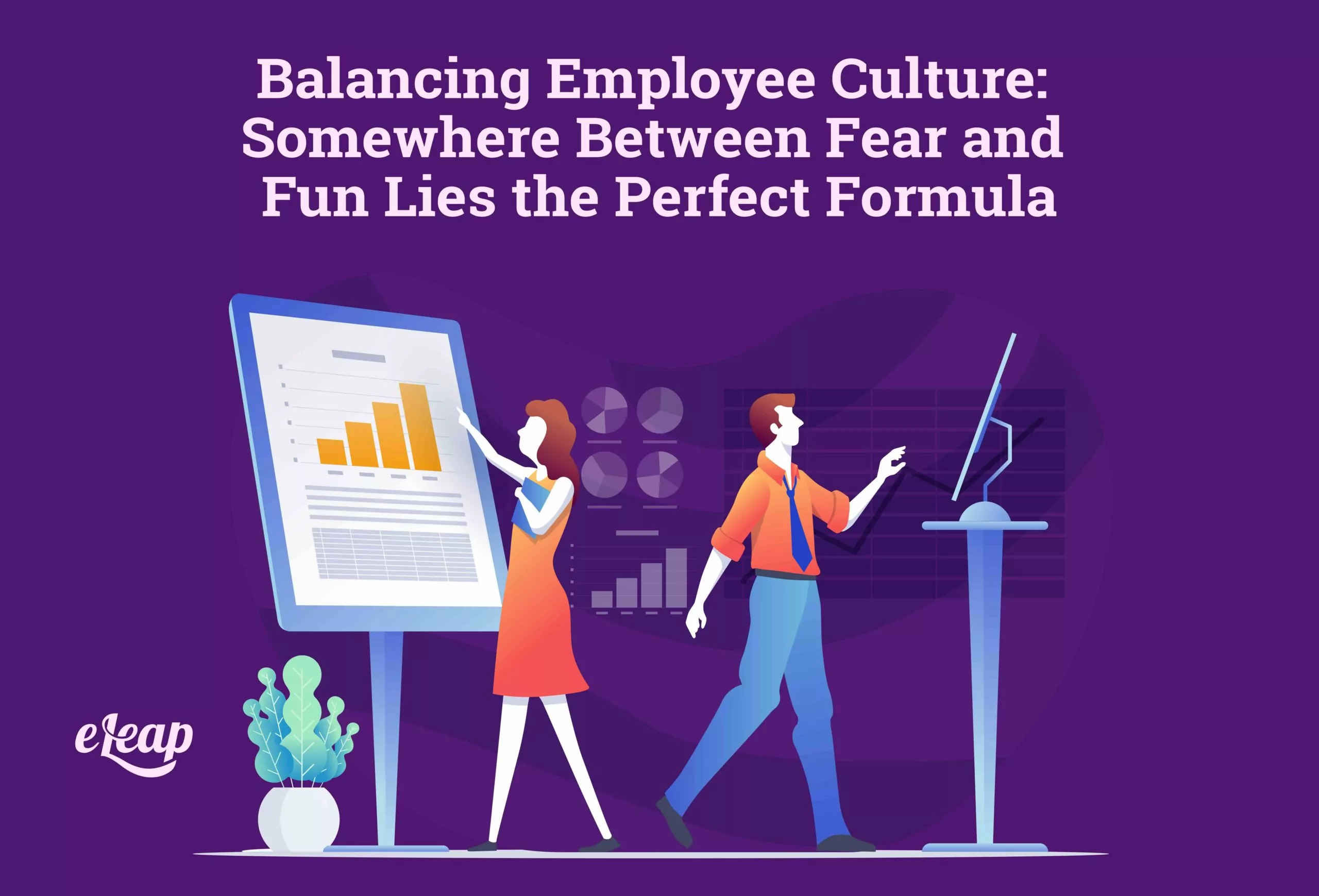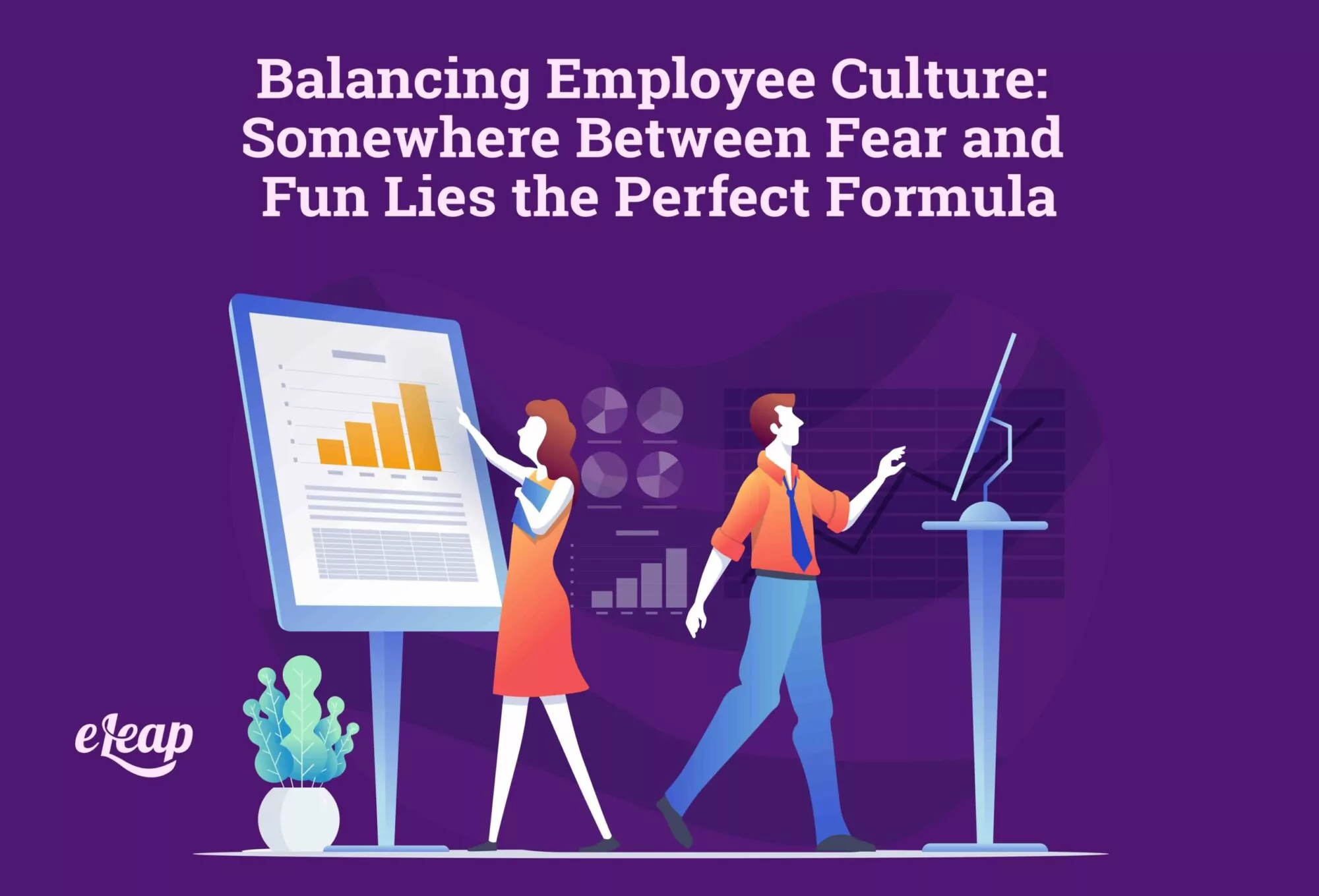Balancing Employee Culture: Somewhere Between Fear and Fun Lies the Perfect Formula

There are a lot of myths and misconceptions out there about workplace culture these days. Company culture is more than a buzzword. While it’s been under fire recently because of the Great Resignation, it’s also been an integral part of organizations for as long as they have existed. Creating the right culture depends on sifting through the misinformation and finding the right resources to help develop an organization that people can enjoy being a part of and contributing to. The eLeaP continuous performance management system provides organizations with powerful options to attract and retain high caliber team members.

Fear Culture Is Bad Form All Around
Unfortunately, some leaders think that fear-based leadership and culture are far more effective than being friendly. They feel that if people fear them, they will be more likely to comply and deliver on performance initiatives. This is no longer the case, and it never was—people just dealt with it because they didn’t know they had another choice.
Today’s employees are much more empowered and informed about their career choices and the way that they’re treated in the workplace. That’s why culture has become such a hot topic. Companies that can’t deliver on that won’t be able to find and retain the best talent. There are several types of culture that you want to avoid, and a fear-based culture is at the top of the list.
A culture based on fear leads to:
- Unclear expectations and goals
- Reliance on threats, humiliation, and/or punishment
- Good deeds going unrecognized
- Employees who are afraid to speak up or engage
- Little or no management support
- Lack of job security
Eventually, all these little things add up to people leaving jobs, experiencing burnout, and realizing that their efforts will be more appreciated somewhere else. No longer are people staying at a job just because they’ve been there for 20 years or because it’s easier to stay. People are leaving, demanding better from the companies they choose and insisting that they are treated like the valuable assets and human beings that they are.
No Fear Doesn’t Mean No Structure
Creating an employee culture that isn’t fear-based also means not just allowing a free-for-all, offering all kinds of incentives, and spending more time and effort planning fun events than focusing on the business. Even the best, most engaging cultures are built on a solid strategy and a structural foundation that sets the organizations and each individual up for success. Balance is difficult, but it can help to take a look at some companies that are leading the way in the culture revolution:
- Meta (Facebook)
- HubSpot
- RingCentral
- Experian
- Uber
- ADP
- Adobe
A lot of these are technology-related companies, so it would make sense that they’re also on the leading edge with company culture. However, any organization can create a strong culture when they know what that means to them specifically. Each company has its own goals and expectations and when the time is invested in creating a structure based on these elements, it will result in a much more effective culture than organizations have ever seen.
Don’t Be Everybody’s “Buddy”
A friendly, personal connection with leadership is always preferred by employees. However, there’s a line between being friendly and approachable and trying too hard to be everyone’s best friend. Business owners and leaders need to know how to balance their responsibilities and create a strong relationship of mutual respect. This will ensure that you can have fun when the time comes, but that you can also get work done and know that your team will listen to your instructions and follow your lead.
Again, it’s a balancing act, and it starts by learning about what culture means to organizations and employees today, as well as how you can create a shift that works for the benefit of your people and the company alike. If you get too friendly with your employees and something goes wrong, it can be hard to approach them and course-correct. Even worse, they may not take you seriously because they think you’re the “cool boss” who isn’t going to nag them about work all the time.
Don’t Make It About Freebies and Perks, Either
Incentives in the form of social events, free food, and other perks are great. However, if you highlight those and nothing else in your culture, you’re only going to attract people with a limited interest. They may not even be passionate about their job or your company, but they are definitely in it for the perks. This could lead to an organization full of employees who don’t have the right values and therefore cannot generate the results that you deserve.
The best employees aren’t just looking for all those trending benefits and perks. They still value things like insurance, paid time off, and 401(k) plans, which are increasingly difficult to find at many organizations today. Emphasize your company values and reflect those in the incentives and perks you create for your employees to create the best culture.
Take Notes and Make Changes
In addition to everything discussed here, it can help to see what other companies are doing and how they’ve taken the steps to reshape their culture. Part of it includes starting a discussion and allowing for constant collaboration and feedback among employees. This will increase their engagement and sense of accountability, which will lead to growth and development for them and a better employee for the organization.
Culture is more than just a buzzword or a passing trend. It’s the basis of every single organization and when it isn’t properly created and cultivated, organizations will not be able to retain the best talent and lead their business into the future. It’s important to outline what leaders want or expect from a culture and then create a structure that promotes those elements. Then, implementing the changes to improve culture will come naturally.
If organizations truly want to be agile and employee-focused, culture deserves a renovation to embrace the future of the working world. That starts with understanding what culture is and should be, as well as what it isn’t. Contact us today for a free consultation.